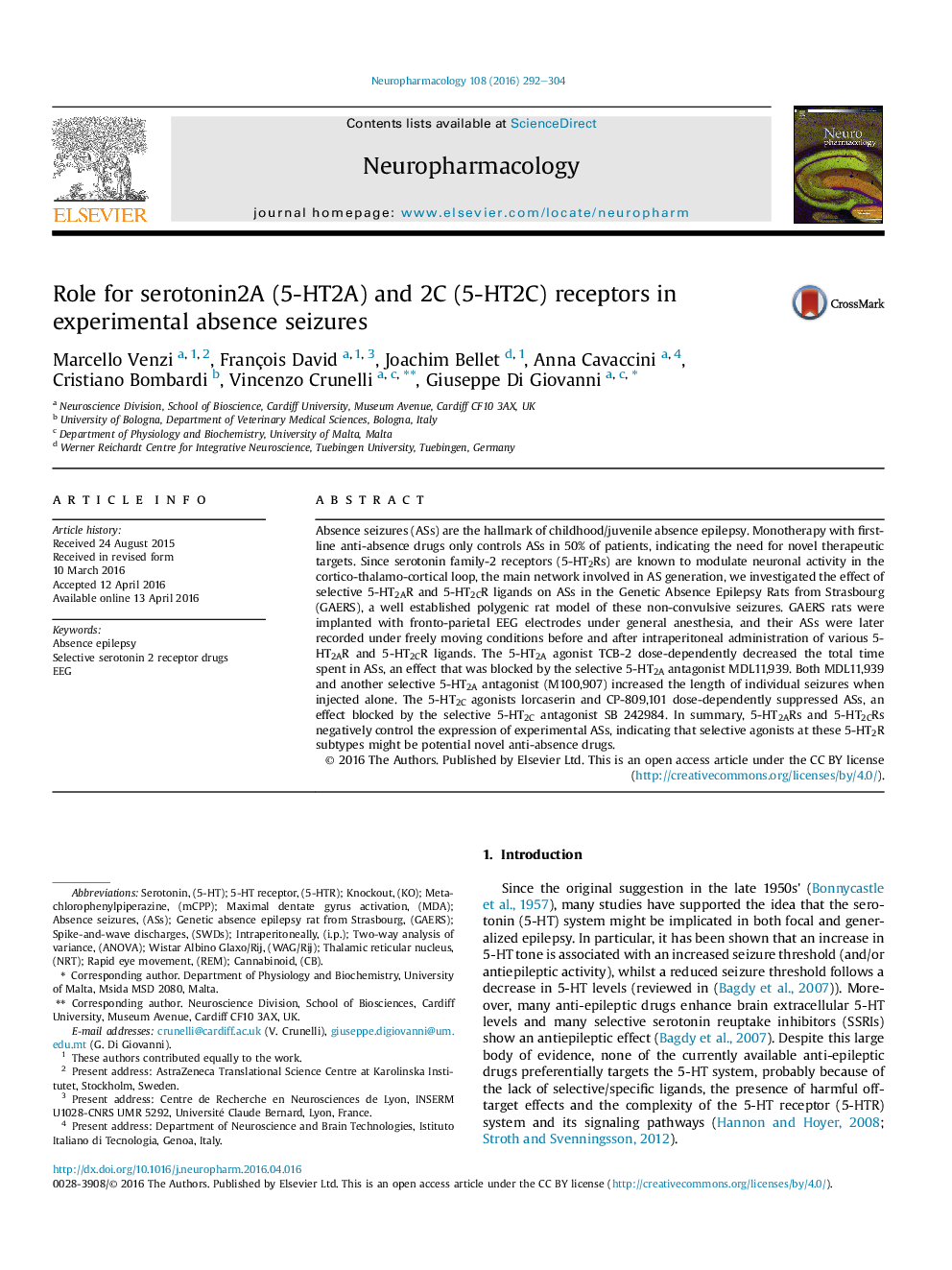| Article ID | Journal | Published Year | Pages | File Type |
|---|---|---|---|---|
| 5813491 | Neuropharmacology | 2016 | 13 Pages |
â¢5-HT2AR activation decreases absence seizures in GAERS.â¢5-HT2CR activation decreases absence seizures in GAERS.â¢5-HT2AR blockade increases absence seizures in GAERS.â¢5-HT2CR blockade does not affect absence seizures in GAERS.
Absence seizures (ASs) are the hallmark of childhood/juvenile absence epilepsy. Monotherapy with first-line anti-absence drugs only controls ASs in 50% of patients, indicating the need for novel therapeutic targets. Since serotonin family-2 receptors (5-HT2Rs) are known to modulate neuronal activity in the cortico-thalamo-cortical loop, the main network involved in AS generation, we investigated the effect of selective 5-HT2AR and 5-HT2CR ligands on ASs in the Genetic Absence Epilepsy Rats from Strasbourg (GAERS), a well established polygenic rat model of these non-convulsive seizures. GAERS rats were implanted with fronto-parietal EEG electrodes under general anesthesia, and their ASs were later recorded under freely moving conditions before and after intraperitoneal administration of various 5-HT2AR and 5-HT2CR ligands. The 5-HT2A agonist TCB-2 dose-dependently decreased the total time spent in ASs, an effect that was blocked by the selective 5-HT2A antagonist MDL11,939. Both MDL11,939 and another selective 5-HT2A antagonist (M100,907) increased the length of individual seizures when injected alone. The 5-HT2C agonists lorcaserin and CP-809,101 dose-dependently suppressed ASs, an effect blocked by the selective 5-HT2C antagonist SB 242984. In summary, 5-HT2ARs and 5-HT2CRs negatively control the expression of experimental ASs, indicating that selective agonists at these 5-HT2R subtypes might be potential novel anti-absence drugs.
